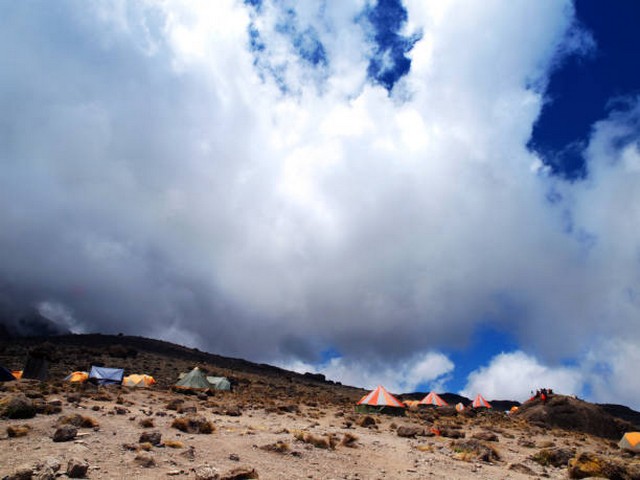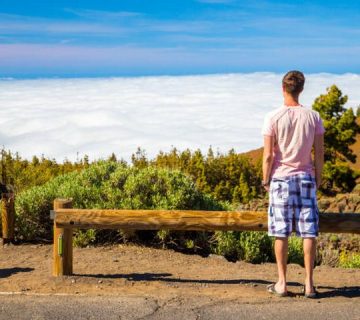How To Manage Kilimanjaro Trekking Logistics As A Solo Traveller
Embrace the Adventure: Solo Trekking on Mount Kilimanjaro
Have you ever dreamed of conquering the majestic Mount Kilimanjaro, standing alone at the rooftop of Africa, surrounded by nothing but sky and spirit? Trekking Kilimanjaro as a solo traveller isn’t just a journey through the stunning landscapes of Tanzania—it’s a profound personal quest. However, the logistics might seem daunting. Fear not! Mastering the art of solo trekking on Kilimanjaro is completely achievable with the right guidance and preparation.
In this blog post, we’ll walk you through essential tips and strategies on how to manage Kilimanjaro trekking logistics as a solo traveller. Whether you’re a seasoned hiker or a curious newbie with a zest for adventure, these insights will ensure your journey is nothing short of spectacular.
Planning Your Kilimanjaro Adventure: A Step-by-Step Guide
1. Choosing the Right Route
Selecting the appropriate route is crucial. Kilimanjaro offers several paths up the mountain, each with different landscapes, durations, and difficulty levels. Popular routes like the Marangu and Machame offer vibrant trails and better-developed facilities. If you crave solitude or a more challenging climb, consider the Shira or Lemosho routes.
2. Securing Permits and Clearances
Climbing Kilimanjaro requires specific permits and park fees. As a solo traveller, handling these can be tricky without support. Agencies like Kilimanjaro Centre For Trekking and Ecotourism (KCTE) can streamline this process, ensuring all legalities are covered without hassle.
3. Booking Your Flight
Plan your arrival at Kilimanjaro International Airport (JRO), which is the most accessible for climbers. Booking flights early can help reduce costs and provide more flexibility in your travel plans.
4. Finding the Right Tour Operator
While you can trek solo, you must be accompanied by a registered guide. Partnering with a reputable and experienced tour operator like KCTE not only enhances your safety but also enriches your climbing experience with expert insights and local knowledge.
5. Accommodation Before and After the Climb
Choose comfortable lodging to acclimatize before the ascent and relax afterward. KCTE offers a range of options that provide cozy comfort and excellent amenities.
Gear Up: Essential Equipment for Your Climb
Proper gear is paramount for a successful climb. Here’s a quick checklist:
- Thermal and Layered Clothing: Temperatures vary drastically, from tropical at the base to below freezing at the summit.
- Quality Hiking Boots: Durable, waterproof, and broken-in boots are a must.
- Hydration Packs and Water Treatment Supplies: Staying hydrated is critical.
- Sleeping Bag and Mat: Opt for a four-season sleeping bag and a comfortable mat.
- Headlamp and Batteries: Essential for early morning summit attempts.
- Walking Poles: They alleviate pressure on your legs and aid balance.
Health and Safety: Staying Fit and Acclimatized
1. Physical Preparation
Begin training several months in advance. Focus on cardio, strength training, and long hikes to condition your body.
2. Acclimatization
Consider routes that offer better acclimatization opportunities. Spend a few days at a higher altitude before your climb and choose a longer itinerary to give your body time to adjust.
3. Insurance and Emergency Plans
Ensure you have travel insurance that covers high-altitude trekking. Register with a service that provides emergency evacuation and medical care.
Navigating Challenges: Tips and Tricks for a Smooth Climb
- Stay Flexible: Weather and physical conditions may require you to adjust your schedule.
- Keep a Positive Mindset: Mental stamina is as important as physical strength.
- Connect with Fellow Climbers: Joining groups at camps can enrich your experience and offer companionship.
Summary: The Call of Kilimanjaro Awaits
Solo trekking Kilimanjaro is an empowering adventure that leaves you with unforgettable memories and stories to tell. By managing logistics effectively and preparing diligently, you set the stage for a successful and enjoyable climb.
Ready to start your solo journey to the summit of Kilimanjaro? Kilimanjaro Centre For Trekking and Ecotourism (KCTE) is here to help every step of the way. From choosing the right route to celebrating at the peak, let KCTE be your trusted partner in this incredible adventure.
FAQ
Can I really climb Kilimanjaro alone?
While you cannot climb completely alone for safety reasons, you can embark on a solo trip facilitated by a guide and support team, which KCTE can arrange for you.
What is the best time to climb Kilimanjaro?
The best times to climb Kilimanjaro are during the dry seasons: January to mid-March and June to October.
How long does it take to climb Kilimanjaro?
It depends on the route, but typically it ranges from 5 to 9 days.
Do I need a visa to travel to Tanzania?
Most travelers need a visa to enter Tanzania, which can be obtained on arrival or online prior to your travel. Check the latest requirements before your trip.
What are the risks of climbing Kilimanjaro?
The main risks include altitude sickness, injuries, and severe weather conditions. Choosing a reputable tour operator like KCTE enhances your safety with experienced guides and proper health precautions.
Embrace the challenge and the beauty of Kilimanjaro—your adventure of a lifetime awaits!




